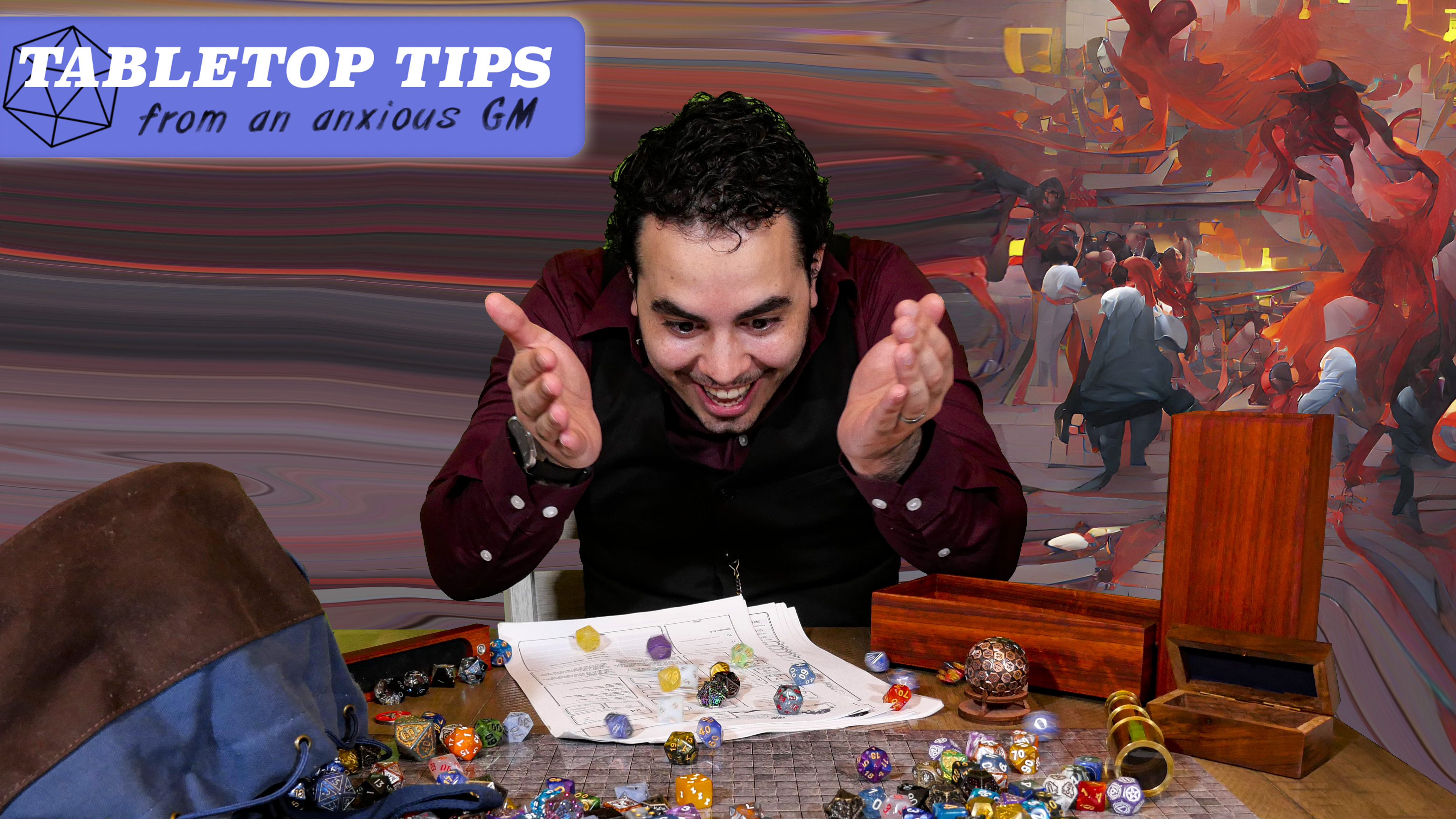Unplanned DND combat broke out and I don’t have a map — What do I do?
Here’s how to get ready for those narsty player impulses

No map? No problem. Getting caught unawares by your unpredictable party is a right of passage for every GM the world over. You can’t prepare for every scenario, but the key to being a good GM, and a GM that won’t tear their hair out, is to prepare for the unexpected. Sounds confusing? Don’t worry, I’ll go over everything. As someone who struggles with anxiety and depression — a combo that is less than ideal for a journalist or a game master juggling seven different players in a six-hour Dungeons & Dragons game — I know it’s tough to improv combat situations.
In this week’s column of Tabletop tips from an anxious GM (all of which can be found on our DND tips hub), I’ll be answering a question from every GM that’s been stumped by a player’s radical decision to punch someone that they weren’t supposed to.
You can 100% prepare yourself for situations like this by having a few tools at the ready, and keeping a few tactics in mind. With this, you’ll properly move the story along with your players thinking that it was all a part of the plan. Let me explain.
TL;DR
Communicate! It’s okay to let your players know that you need time to set things up. Theater of the mind — if you have a small enough encounter, you don’t need a map, you just need a little imagination! Just Google it — seriously, you’re bound to find a cool looking map that matches your scene somewhere online. Speedy cartographer — take some time to whip up a map real quick. All you need is terrain, debris, and a grid, and some tools even generate maps for you. But wait, the tokens! You can find a hoard of easy-to-customize tokens from 2-Minute Tabletop.
How to set up an unexpected DND combat scenario — an in-depth look

Communicate! If you want to keep the illusion of roleplay but your players just instigated a wild combat encounter, it’s time to call for a break. You can give it a little narrative, suspenseful flair just before you say “and that’s where we’re going to take a break.” During this little break, you’re going to get your stuff together. You can also be completely transparent and tell your players you need a small break to set up. There’s no shame in that! And your players might even like it — we all enjoy doing things that the GM doesn’t expect.
Theater of the mind. The first step to consider is keeping everything in the theater of the mind, mostly because it can be a pain in the ass to set up a physical or digital map. This works best when there are fewer enemies than players, and fewer players than your brain can juggle in an imaginary encounter within a game that heavily relies on strict movement speed. You’ll have to be a little more lenient with movement speeds and distances of attacks, but other than that, everything should function the same.

Just Google it. Did your players just piss off a street market full of devils in one of the nine layers of hell and you don't have a map? Whelp, it's time to use a lovely resource called Google. You can find a bunch of wicked cool maps freely available to use. Just describe your scene in as few characters as possible, and voila, you have your combat map. Some great resources I use are 2-Minute Tabletop, DnD Maps, and Dice Grimorium.
Sign up to receive The Snapshot, a free special dispatch from Laptop Mag, in your inbox.
Speedy cartographer. If you can’t find anything that suits your needs, you could always just make a map! Yes, this requires more effort, but if you’re skilled in a particular map-making program, then this could take as short as 10 minutes to bust out (trust me, I’ve done it). I’ve used Inkarnate, but there are other great resources, like Dungeon Fog and Dungeon Scrawl, which are free. If you’re looking for great paid tools, check out DungeonDraft ($20). You could also keep some grid paper on hand for these sorts of emergencies and freehand a map to keep everyone on the same literal and figurative page.

But wait, the tokens! We can’t forget about the tokens, can we? Ideally, you will have tokens for all of your players, so that shouldn’t be an issue, but if you’re looking for tokens for your baddies, we’ve got you covered. I use resources like 2-Minute Tabletop for quick and easy tokens that I can edit. However, if you have some art in mind, or you need something very particular, you can take that and dump it in RollAdvantage’s Token Stamp. This tool lets you make tokens out of any art, all you have to do is drag and drop.

I hope this helps new players and GMs out there who are just jumping into TTRPGs. If you liked this column and want to see it continue, you can send me your own questions concerning mechanical, narrative, or social issues in the tabletop gaming space. You can email me at rami.tabari@futurenet.com or find me on Twitter.

Rami Tabari is the Reviews Editor for Laptop Mag. He reviews every shape and form of a laptop as well as all sorts of cool tech. You can find him sitting at his desk surrounded by a hoarder's dream of laptops, and when he navigates his way out to civilization, you can catch him watching really bad anime or playing some kind of painfully difficult game. He’s the best at every game and he just doesn’t lose. That’s why you’ll occasionally catch his byline attached to the latest Souls-like challenge.
